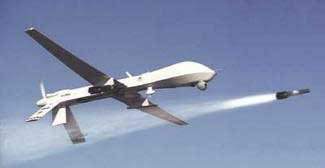In a moving testimony at the Guardian, Heather Linebaugh, a former drone analyst for the United States, writes:
“Whenever I read comments by politicians defending the Unmanned Aerial Vehicle Predator and Reaper program – aka drones – I wish I could ask them a few questions. I’d start with: ‘How many women and children have you seen incinerated by a Hellfire missile?’ And: ‘How many men have you seen crawl across a field, trying to make it to the nearest compound for help while bleeding out from severed legs?'”
Drones are accurate to the nth degree. Yet another, seemingly less complex aspect of their technology continually underperforms. Ms. Linebaugh:
What the public needs to understand is that the video provided by a drone is not usually clear enough to detect someone carrying a weapon, even on a crystal-clear day with limited cloud and perfect light. This makes it incredibly difficult for the best analysts to identify if someone has weapons for sure. One example comes to mind: “The feed is so pixelated, what if it’s a shovel, and not a weapon?”
How often have we heard drone operators and analysts attest to optics that appear to be much less highly developed than the system’s targeting capabilities? Entrepreneurs who see an opening in the marketplace, as well as consumer demand for their products, have created a tradition of bringing products to the market while they’re still under development.
You have only to browse through Sears Roebucks’ catalogs over the years to appreciate the primitive form in which products often enter the market. A modern example of a product that made consumers feel like unwitting beta testers (aka guinea pigs) is the wireless router. Until the most recent generation ― finally ergonomic ― their unreliability taxed the patience of many a consumer to the limit.
A weaponized drone system without optics powerful enough to determine whether the humans its operator and analyst are intending to target then becomes just another product brought to the marketplace before its time. In the United States today, because of the threat of lawsuits, such a product couldn’t get off the ground. But, apparently, that’s of little concern in Afghanistan, where, as in Pakistan and Yemen, only about $5,000 (who came up with that figure?) is paid to families for a wrongful deaths.

